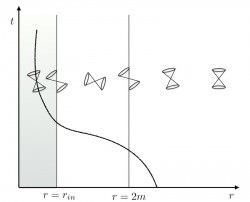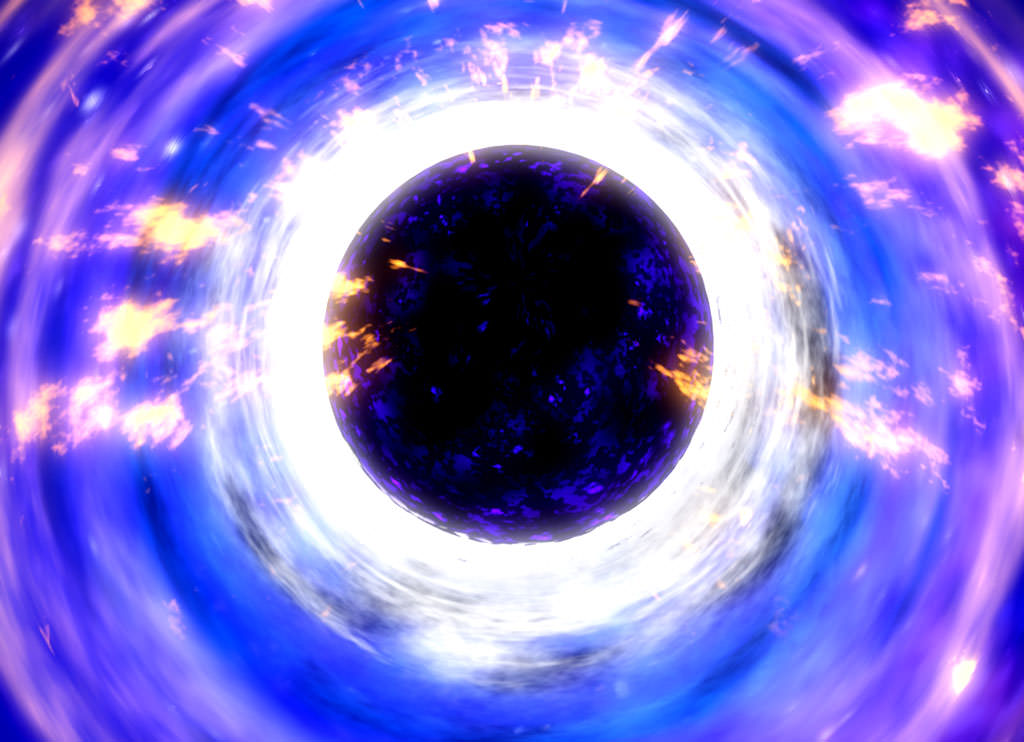A new paper has been posted on the arxiv (a repository of research preprints) introducing the idea of a Planck star arising from a black hole. These hypothetical objects wouldn’t be a star in the traditional sense, but rather the light emitted when a black hole dies at the hands of Hawking radiation. The paper hasn’t been peer reviewed, but it presents an interesting idea and a possible observational test.
When a large star reaches the end of its life, it explodes as a supernova, which can cause its core to collapse into a black hole. In the traditional model of a black hole, the material collapses down into an infinitesimal volume known as a singularity. Of course this doesn’t take into account quantum theory.
Although we don’t have a complete theory of quantum gravity, we do know a few things. One is that black holes shouldn’t last forever. Because of quantum fluctuations near the event horizon of a black hole, a black hole will emit Hawking radiation. As a result, a black hole will gradually lose mass as it radiates. The amount of Hawking radiation it emits is inversely proportional to its size, so as the black hole gets smaller it will emit more and more Hawking radiation until it finally radiates completely away.
Because black holes don’t last forever, this has led Stephen Hawking and others to propose that black holes don’t have an event horizon, but rather an apparent horizon. This would mean the material within a black hole would not collapse into a singularity, which is where this new paper comes in.

The authors propose that rather than collapsing into a singularity, the matter within a black hole will collapse until it is about a trillionth of a meter in size. At that point its density would be on the order of the Planck density. When the the black hole ends its life, this “Planck star” would be revealed. Because this “star” would be at the Planck density, it would radiate at a specific wavelength of gamma rays. So if they exist, a gamma ray telescope should be able to observe them.
Just to be clear, this is still pretty speculative. So far there isn’t any observational evidence that such a Planck star exists. It is, however, an interesting solution to the paradoxical side of black holes.


that thing must have a huge spin